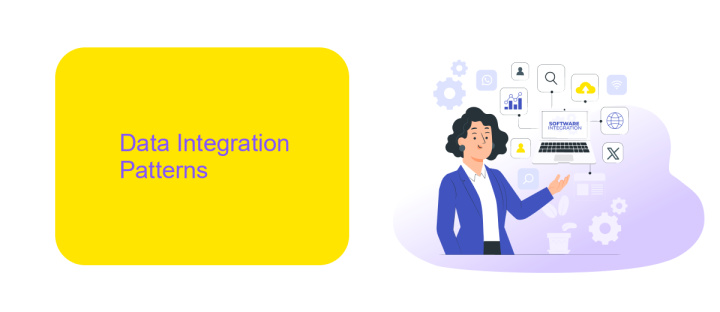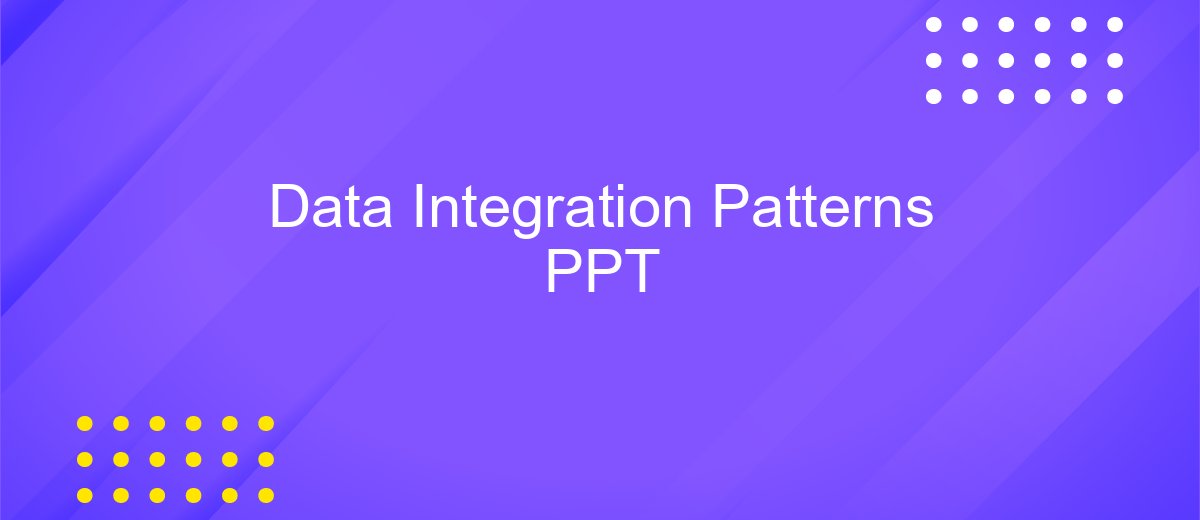Data Integration Patterns PPT
In today's data-driven world, effective data integration is crucial for businesses to harness the full potential of their information assets. This presentation on Data Integration Patterns explores various methodologies and best practices for seamlessly combining data from disparate sources. By understanding these patterns, organizations can improve data accuracy, enhance decision-making processes, and drive innovation. Dive in to discover how to optimize your data integration strategy.
Data Integration Problems and Challenges
Data integration is a critical aspect of modern enterprise systems, yet it comes with its own set of problems and challenges. One of the primary issues is data inconsistency, where data from different sources may not align perfectly. This can result in inaccurate reporting and flawed decision-making. Additionally, the sheer volume of data can be overwhelming, making it difficult to manage and integrate effectively.
- Data Inconsistency: Different formats and standards across data sources.
- Data Volume: Handling large amounts of data can be challenging.
- Data Quality: Ensuring the accuracy and reliability of integrated data.
- Security Concerns: Protecting sensitive data during integration processes.
- Latency Issues: Real-time data integration can be difficult to achieve.
Addressing these challenges requires a robust data integration strategy that includes data quality management, standardized protocols, and advanced security measures. By understanding and mitigating these issues, organizations can achieve more efficient and reliable data integration, leading to better insights and decision-making capabilities.
Data Integration Patterns

Data integration patterns are essential for combining data from different sources into a unified view, ensuring consistency and usability across various platforms. These patterns include ETL (Extract, Transform, Load), ELT (Extract, Load, Transform), data replication, data virtualization, and data federation. Each pattern has its unique advantages and use cases, depending on the specific requirements of the integration project. For example, ETL is ideal for batch processing and data warehousing, while data virtualization allows real-time access to data without physical movement.
In the modern data landscape, tools like ApiX-Drive simplify the implementation of these patterns by providing seamless integration capabilities. ApiX-Drive supports various data sources and automates data workflows, reducing the complexity and time required for integration tasks. By leveraging such tools, organizations can achieve efficient data synchronization, improve data quality, and enhance decision-making processes. Whether you need to integrate CRM systems, marketing platforms, or other business applications, ApiX-Drive offers a versatile solution to meet diverse data integration needs.
Shared Data Model Pattern

The Shared Data Model Pattern is a fundamental approach in data integration that aims to create a unified data model accessible by multiple applications within an organization. This pattern ensures that data consistency and integrity are maintained across different systems, facilitating seamless data sharing and collaboration. By adopting a shared data model, organizations can streamline their data management processes and reduce redundancy.
1. Centralized Data Repository: A single, centralized database where all data is stored and managed.
2. Data Standardization: Ensuring that data formats, definitions, and structures are consistent across all systems.
3. Data Access Controls: Implementing security measures to regulate who can access and modify the data.
4. Synchronization Mechanisms: Tools and processes to keep data synchronized across different applications.
Implementing the Shared Data Model Pattern can significantly enhance an organization's ability to leverage its data assets effectively. It provides a scalable solution for data integration, enabling real-time data access and reducing the complexity of data management. This pattern is particularly beneficial for large organizations with multiple departments and systems that need to work together seamlessly.
Message Bus Pattern

The Message Bus Pattern is a design pattern used in data integration to facilitate communication between different systems or components. It acts as a central hub through which messages are transmitted, ensuring that data flows seamlessly and efficiently across various platforms. This pattern is particularly useful in complex architectures where multiple applications need to interact in real-time.
One of the key advantages of the Message Bus Pattern is its ability to decouple systems, allowing them to operate independently while still exchanging information. This decoupling reduces dependencies and enhances system scalability and flexibility. Additionally, it simplifies error handling and monitoring, making it easier to maintain and troubleshoot the integrated systems.
- Decouples systems for independent operation
- Enhances scalability and flexibility
- Simplifies error handling and monitoring
- Facilitates real-time data exchange
Implementing the Message Bus Pattern can significantly streamline data integration processes, making it easier to manage and scale complex systems. By using a centralized message bus, organizations can ensure that their applications remain responsive and efficient, even as they grow and evolve.


Data Virtualization Pattern
Data Virtualization Pattern offers a streamlined approach to data integration by allowing users to access and manipulate data without needing to know its physical location or format. This pattern abstracts the technical complexities involved in data integration, providing a unified view of data from multiple sources. It enables real-time data access and reduces the need for extensive data replication, making it an efficient solution for organizations looking to integrate diverse data sets seamlessly.
One of the tools that can facilitate data virtualization is ApiX-Drive. This service simplifies the integration process by offering a user-friendly interface to connect various APIs without requiring extensive coding skills. ApiX-Drive allows users to configure integrations quickly, ensuring that data from different sources can be accessed and managed in real-time. By leveraging such tools, organizations can enhance their data integration capabilities, improve data accessibility, and streamline their operations effectively.
FAQ
What are Data Integration Patterns?
Why is Data Integration important?
What are some common Data Integration Patterns?
How can I automate Data Integration processes?
What are the challenges of Data Integration?
Apix-Drive is a universal tool that will quickly streamline any workflow, freeing you from routine and possible financial losses. Try ApiX-Drive in action and see how useful it is for you personally. In the meantime, when you are setting up connections between systems, think about where you are investing your free time, because now you will have much more of it.

